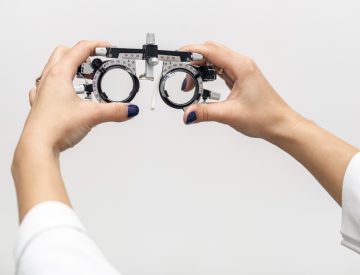

What is LASIK treatment?
LASIK eye surgery is the best-known and most commonly performed laser refractive surgery to correct vision problems. Laser-assisted in situ keratomileusis (LASIK) can obviate the need for glasses or contact lenses.
During LASIK surgery, a special cutting laser is used to reshape the cornea and change the eye power. The cornea is the transparent front surface of the eye.
What is the procedure of LASIK?
Before the surgery, topical anaesthetic eyedrops are administered. The eye is aligned with the laser machine, with the speculum separating the eyelids. A suction ring is applied to stabilize the eyeball. A corneal flap is created with a microkeratome or Femtosecond laser. Using the laser, the cornea tissue is reshaped, and the flap is put back in place.
What is customized LASIK?
Customized LASIK is an advanced laser technology, which is based upon the unique visual characteristics of your eye. The calculations and planning for LASIK is tailor made for your eye.
What are the key benefits of customized LASIK over traditional LASIK?
It’s highly effective in correcting both lower and higher order aberrations, which gives the patient better visual quality and contrast sensitivity.
We're
Certified
What are the specific eye conditions and general health conditions that might disqualify you from LASIK?
Age
People with age less than 18 are usually advised to wait to get their Lasik done as the eye power may change for a few years.
Unstable glass power
LASIK is best done when eye power has been stable for atleast one year, as the eye power calculations for LASIK are done as per the current power.
Advanced Glaucoma
LASIK can interfere with correct measurement of eye pressure, hence not advisable in patients who have glaucoma.
Severe Dry eye
Post LASIK, dry eye can worsen. Severe dry eye also interferes with the calculations done before LASIK.
Thin corneas
During reshaping of the cornea in LASIK, the cornea is made thinner by a certain amount, so as to change the eye power. Hence, an eye with a thin cornea to begin with is not a suitable eye for LASIK.
Abnormal corneal maps
Corneal topography maps the corneal curvature and thickness. If a condition which causes progressive thinning of the cornea is suspected, for example, in Keratoconus, it is best to avoid LASIK.
Lens / Corneal Opacity
LASIK is not advisable in this condition.
Squint or gross eye muscle abnormality
Post LASIK, dry eye can worsen. Severe dry eye also interferes with the calculations done before LASIK.

LASIK
You Can Find All Answers Here
Bladeless LASIK involves the use of two lasers – first is the Femtosecond Laser, which creates a thin flap of cornea and second is Excimer Laser which reshapes the cornea.
While microkeratome- LASIK is also a sophisticated surgery which gives good results, bladeless Femtosecond -LASIK has the advantages of being more accurate, precise and predictable.
